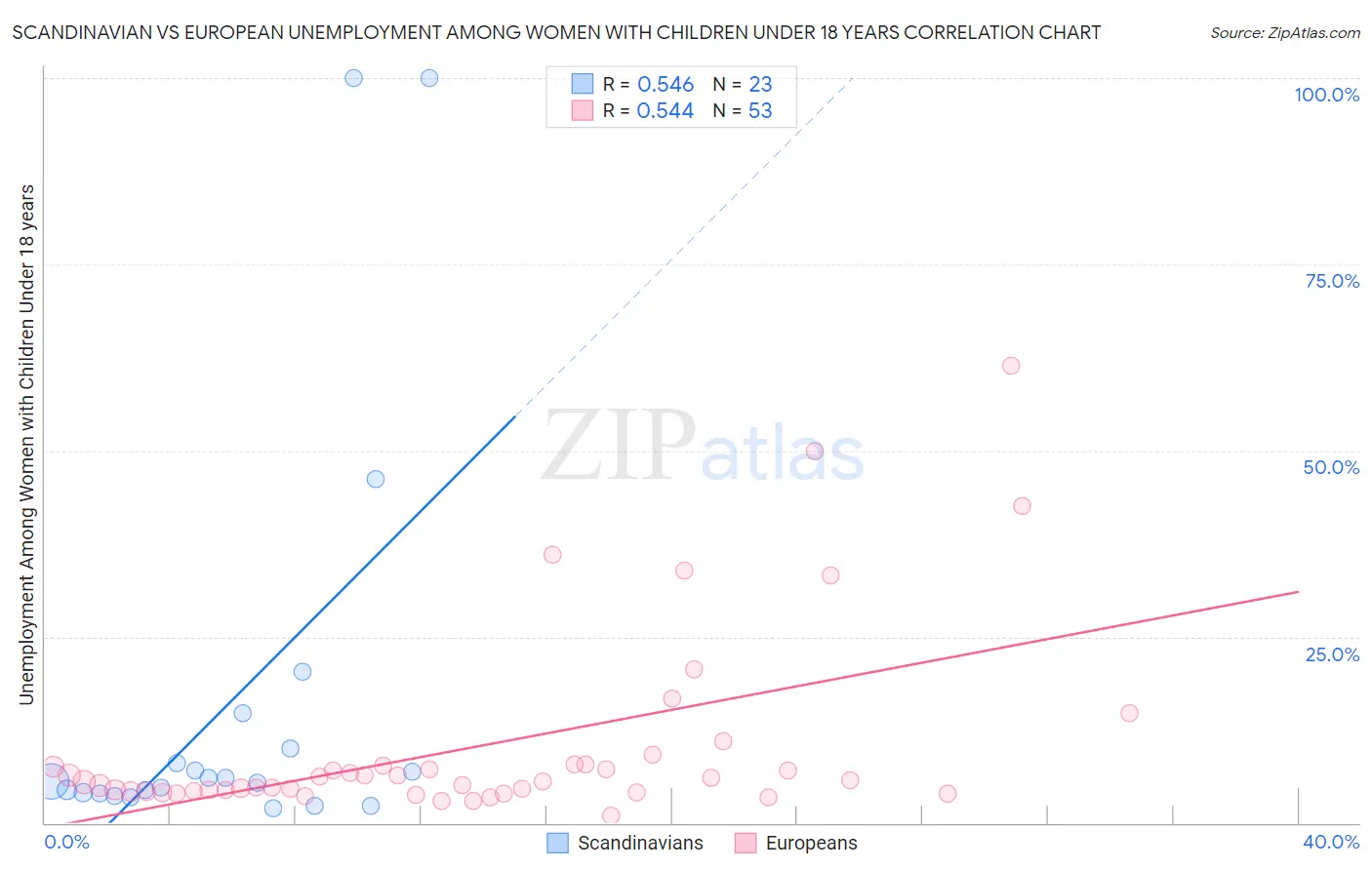Scandinavian vs European Unemployment Among Women with Children Under 18 years
COMPARE
Scandinavian
European
Unemployment Among Women with Children Under 18 years
Unemployment Among Women with Children Under 18 years Comparison
Scandinavians
Europeans
4.8%
UNEMPLOYMENT AMONG WOMEN WITH CHILDREN UNDER 18 YEARS
99.9/ 100
METRIC RATING
12th/ 347
METRIC RANK
4.9%
UNEMPLOYMENT AMONG WOMEN WITH CHILDREN UNDER 18 YEARS
99.6/ 100
METRIC RATING
21st/ 347
METRIC RANK
Scandinavian vs European Unemployment Among Women with Children Under 18 years Correlation Chart
The statistical analysis conducted on geographies consisting of 439,295,167 people shows a substantial positive correlation between the proportion of Scandinavians and unemployment rate among women with children under the age of 18 in the United States with a correlation coefficient (R) of 0.546 and weighted average of 4.8%. Similarly, the statistical analysis conducted on geographies consisting of 510,313,467 people shows a substantial positive correlation between the proportion of Europeans and unemployment rate among women with children under the age of 18 in the United States with a correlation coefficient (R) of 0.544 and weighted average of 4.9%, a difference of 2.7%.

Unemployment Among Women with Children Under 18 years Correlation Summary
| Measurement | Scandinavian | European |
| Minimum | 2.0% | 0.99% |
| Maximum | 100.0% | 61.3% |
| Range | 98.0% | 60.3% |
| Mean | 16.1% | 10.3% |
| Median | 5.5% | 5.6% |
| Interquartile 25% (IQ1) | 4.0% | 4.2% |
| Interquartile 75% (IQ3) | 10.0% | 7.8% |
| Interquartile Range (IQR) | 6.0% | 3.6% |
| Standard Deviation (Sample) | 28.0% | 12.7% |
| Standard Deviation (Population) | 27.4% | 12.6% |
Demographics Similar to Scandinavians and Europeans by Unemployment Among Women with Children Under 18 years
In terms of unemployment among women with children under 18 years, the demographic groups most similar to Scandinavians are Filipino (4.8%, a difference of 0.46%), Bulgarian (4.8%, a difference of 0.51%), Cambodian (4.8%, a difference of 0.86%), Czech (4.7%, a difference of 0.91%), and Okinawan (4.7%, a difference of 0.92%). Similarly, the demographic groups most similar to Europeans are Indian (Asian) (4.9%, a difference of 0.19%), Immigrants from China (4.9%, a difference of 0.40%), Belgian (4.9%, a difference of 0.49%), Chinese (4.9%, a difference of 0.50%), and Latvian (4.9%, a difference of 0.61%).
| Demographics | Rating | Rank | Unemployment Among Women with Children Under 18 years |
| Immigrants | Taiwan | 100.0 /100 | #6 | Exceptional 4.7% |
| Immigrants | India | 100.0 /100 | #7 | Exceptional 4.7% |
| Immigrants | Hong Kong | 100.0 /100 | #8 | Exceptional 4.7% |
| Okinawans | 99.9 /100 | #9 | Exceptional 4.7% |
| Czechs | 99.9 /100 | #10 | Exceptional 4.7% |
| Filipinos | 99.9 /100 | #11 | Exceptional 4.8% |
| Scandinavians | 99.9 /100 | #12 | Exceptional 4.8% |
| Bulgarians | 99.9 /100 | #13 | Exceptional 4.8% |
| Cambodians | 99.9 /100 | #14 | Exceptional 4.8% |
| Thais | 99.8 /100 | #15 | Exceptional 4.8% |
| Taiwanese | 99.8 /100 | #16 | Exceptional 4.8% |
| Immigrants | Singapore | 99.8 /100 | #17 | Exceptional 4.9% |
| Slovenes | 99.8 /100 | #18 | Exceptional 4.9% |
| Germans | 99.8 /100 | #19 | Exceptional 4.9% |
| Latvians | 99.7 /100 | #20 | Exceptional 4.9% |
| Europeans | 99.6 /100 | #21 | Exceptional 4.9% |
| Indians (Asian) | 99.6 /100 | #22 | Exceptional 4.9% |
| Immigrants | China | 99.6 /100 | #23 | Exceptional 4.9% |
| Belgians | 99.5 /100 | #24 | Exceptional 4.9% |
| Chinese | 99.5 /100 | #25 | Exceptional 4.9% |
| Swiss | 99.5 /100 | #26 | Exceptional 4.9% |